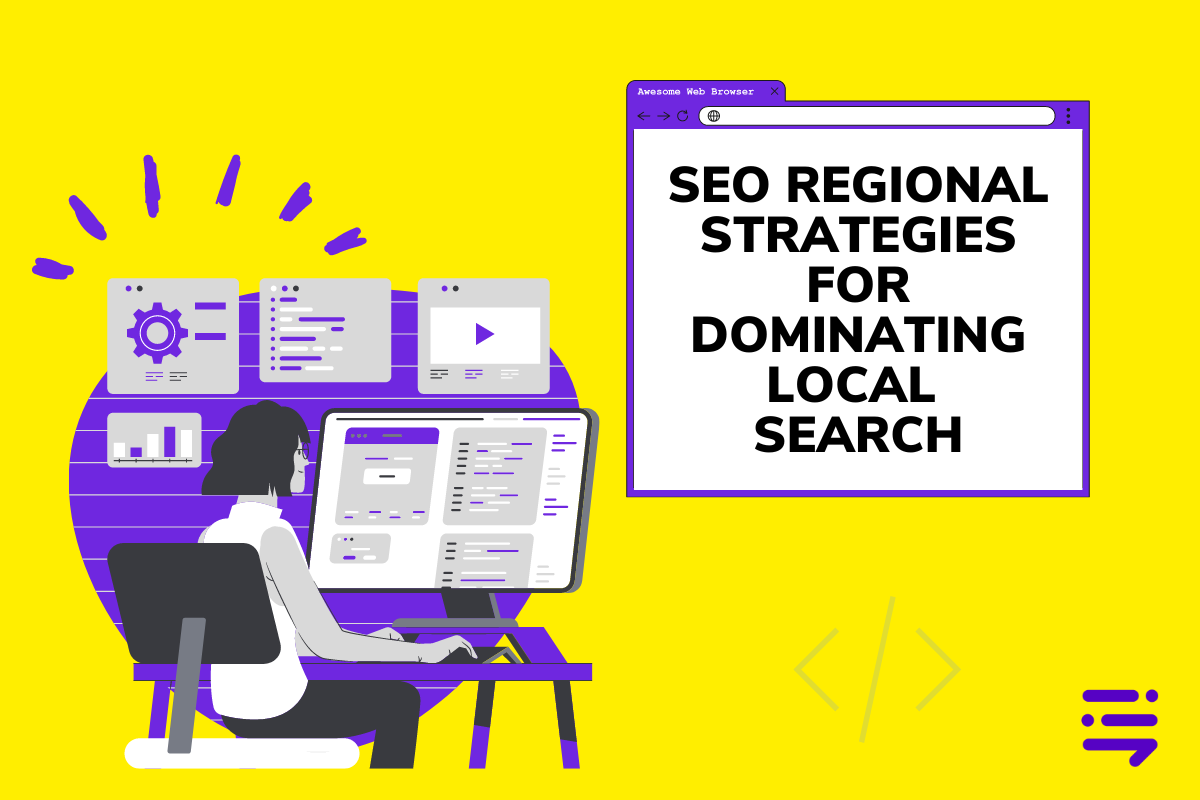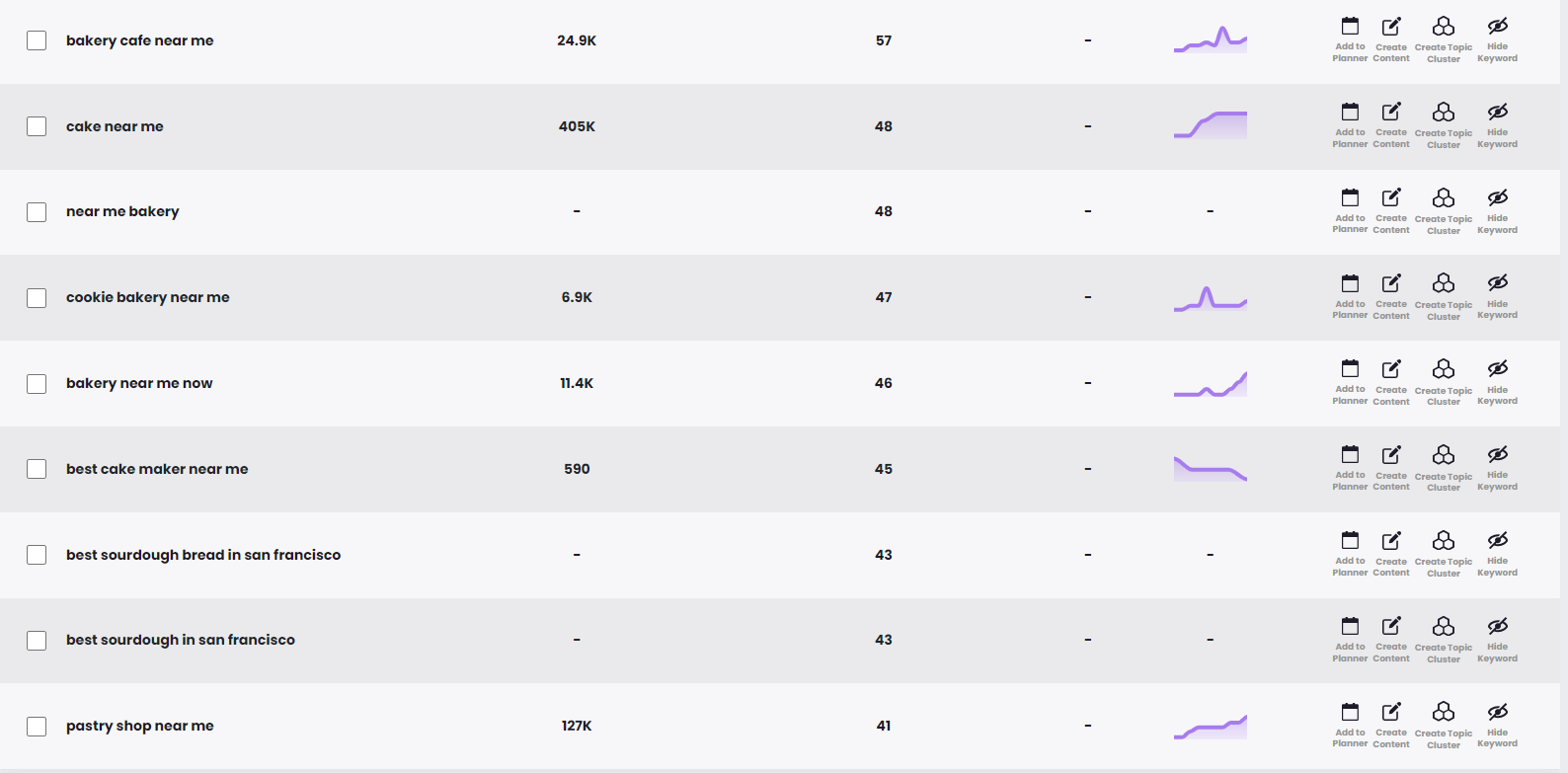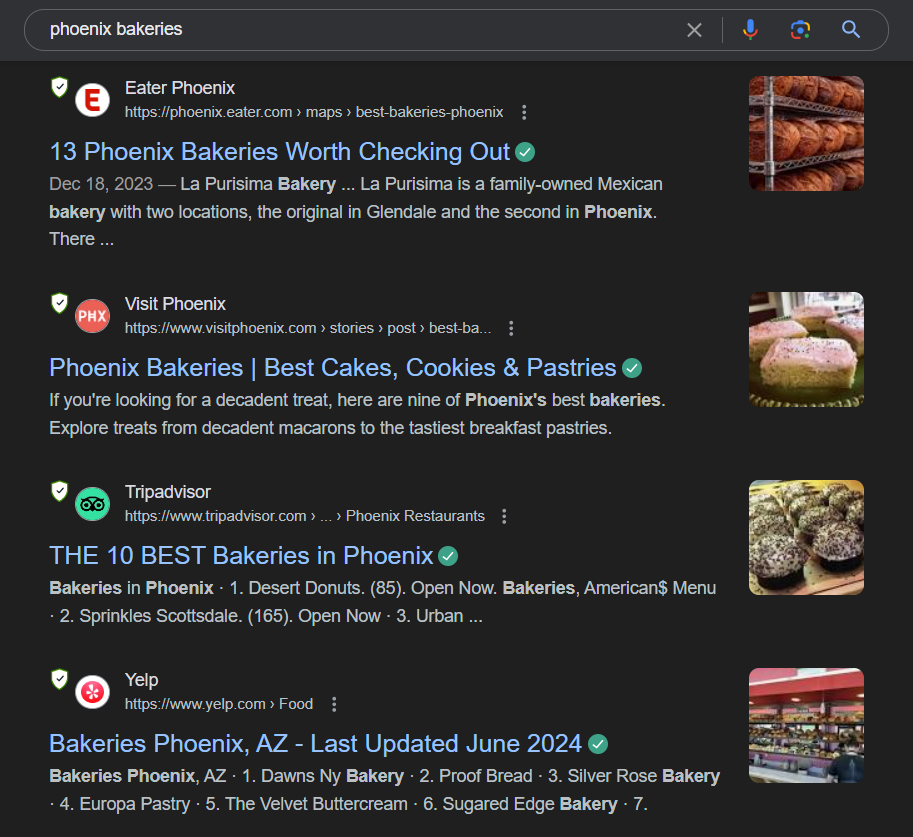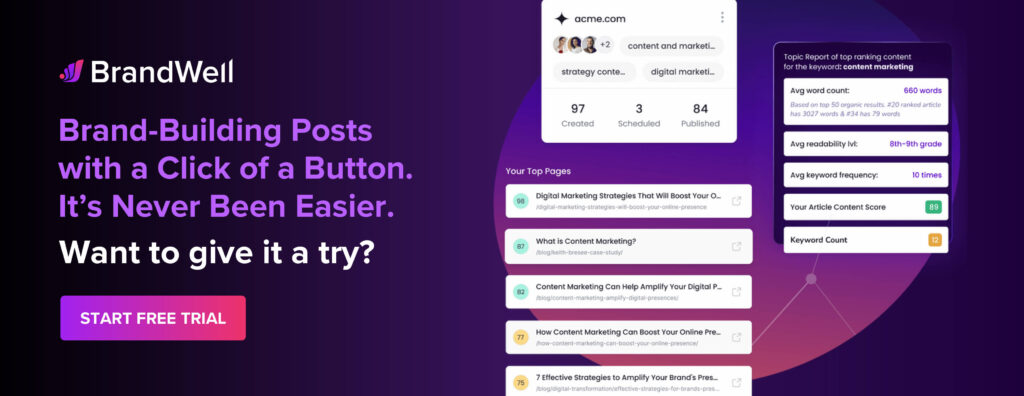Discover top guides, trends, tips and expertise from AIO Writers
SEO Regional Strategies for Dominating Local Search
Julia McCoy
Monday, 24th Jun 2024
Imagine you own a bakery in a busy city like San Francisco. While the smell of fresh bread draws in foot traffic, you know more potential customers are out there. This is where SEO regional strategies come in.
This specialized strategy helps your website rank higher in search results for a specific geographic region. By using regional SEO, you can target a broader audience who are more likely to become loyal customers.
How does regional SEO work?
Searching “bakery” on Google brings up millions of results. Adding a location to your keyword like “bakery in downtown San Francisco” narrows the results to businesses in that area.
Almost half of all Google searches are for local businesses, which is why Google prioritizes showing local results when users want something “near me.”
By strategically using SEO regional techniques, your bakery will appear when someone searches for the “best croissant in downtown San Francisco.” This helps bring in more customers eager to try your pastries.
Let me share with you more actionable strategies on how to boost your website visibility through regional SEO.
Table Of Contents:
- Traditional vs. Local SEO
- Regional SEO vs. Hyperlocal SEO
- Benefits of a Well-Executed SEO Regional Strategy
- Implementing a Robust Regional SEO Strategy
- FAQs: SEO Regional
- Conclusion
Traditional vs. Local SEO
Traditional SEO improves your website’s nationwide visibility. Regional SEO, on the other hand, narrows down the focus to a specific city, state, or region.
This is useful for businesses that operate in specific locations and want to attract customers from those areas.
It’s a focused approach that ensures your marketing efforts reach the right customers at the right time.
Regional SEO vs. Hyperlocal SEO
Regional SEO focuses on optimizing for broader geographic areas such as states, provinces, or larger regions within a country. It targets a wider audience than local SEO and often involves targeting multiple cities or areas within a region.
Local SEO, on the other hand, is more narrowly focused on optimizing for specific cities, towns, or neighborhoods to attract nearby customers searching for local products or services.
How Does Local SEO Work?
The searcher’s location is a critical factor when search engine algorithms deliver relevant search results. Optimizing your website for local SEO tells search engines that your business is relevant to users in that particular geographic area.
For example, if your bakery is in San Francisco, you want Google to show your website to people searching for “San Francisco bakeries” or “best sourdough in San Francisco.”
This hyperlocal targeting uses various strategies. Some key ones include optimizing your Google My Business profile, using location-specific keywords on your website, and getting backlinks from local businesses.
Benefits of a Well-Executed SEO Regional Strategy
Beyond improved SERP visibility, regional SEO offers real benefits that can impact your bottom line.
1. Attract Local Customers
When someone searches for a “bakery near me,” they’re looking for a bakery in their immediate vicinity and are ready to make a purchase. With a solid SEO regional strategy, your bakery will appear higher in search results for users searching within your defined geographical area. This makes it easier for local customers to find you.
2. Get Qualified Leads
Regional SEO prioritizes quality over quantity. While broader SEO may bring in a wider range of visitors, local SEO ensures that traffic to your site is genuinely interested in your business.
According to reports, 76% of local searches result in a business visit within a day. That’s a high conversion rate from an online search to a potential customer walking through your door.
3. Higher Conversion Rates
Targeting specific regions or cities attracts customers ready to convert. These potential customers have a high level of intent because they are specifically looking for a business in their area.
An active, local-focused website builds trust with your audience. They see you as an active part of the community, leading to stronger relationships and increased customer loyalty. This local connection is invaluable for long-term growth.
4. Cost Savings
Implementing a Robust Regional SEO Strategy
Now let me show you seven important elements of an effective SEO regional strategy.
1. Your Google Business Profile
Formerly called Google My Business, your Google Business Profile is your online storefront and should be your top priority.
Make sure you:
- Claim and Verify Your Listing: Claiming your listing allows you to control the displayed information. Verify it so Google knows you’re a legitimate business.
- Accurate Business Information: Ensure your business name, address, phone number, website address, and hours of operation are consistent across all platforms. This is crucial in establishing authority.
- Compelling Description: Showcase what makes your bakery special and entices customers to choose you.
- High-Quality Images: Tempt potential customers with appealing photos of your baked goods.
- Customer Reviews: Positive reviews build social proof and boost your bakery’s credibility. Encourage your happy customers to share their experiences and post them on your Google profile.
2. Location-Based Keywords
Keywords are essential in SEO — whether traditional or local. Research and use keywords and phrases that people use to search for bakeries in your area.
Tools like BrandWell can help you find relevant keywords. Instead of just targeting “bakery,” be specific with “artisanal bakery downtown San Francisco” or “sourdough bread bakery Fisherman’s Wharf.”
Here are more keyword suggestions from BrandWell’s keyword generator report:

When a user searches for “best sourdough in San Francisco,” the chances of your website appearing on top of search results will increase if your content, Google profile, and social media accounts are optimized with the right keywords.
3. On-Page Optimization
Ensure your website speaks Google’s language, beyond just your Google Business Profile.
- NAP Consistency on your Website: All of your NAP information should be consistent across all platforms, including your website, your business profiles on directories like Google or Yelp, and your social media bios. This establishes legitimacy and makes it easy for customers and search engines to find you. Consistent NAP data builds trust with both customers and search engines.
- Location Pages: If you have multiple locations, create a dedicated page for each, outlining specific details like the area you serve. You can highlight specific neighborhood stories or events on these pages to connect with the local audience.
- Local Content: Attract local customers and show Google you’re one of them with blog posts like: “Best Coffee Shops Near Our Bakery,” “5 Reasons Why Our Neighborhood Loves Our Croissants,” or even “Top 10 Desserts in San Francisco.”
People are always searching for valuable content. BrandWell’s RankWell long-form writer can help you build out these pages so you can provide region-specific content that meets your audience’s needs while establishing your authority in your niche.
Remember the list of keywords from our keyword report earlier? You can turn those phrases into long-form blog posts by simply clicking the “Create Content” button. From there, you can start optimizing your on-page elements.
4. Local Citations
Citations are like votes of confidence for your business. These are online mentions of your business’s name, address, and phone number (NAP) on other websites.
Consistent citations across the web are crucial for local rankings. Think local directories, industry-specific websites, and even local news websites.
These citations increase your online visibility and help local customers discover your bakery. They also signal to search engines that your business is legitimate and relevant to a specific area.

5. Local Link Building
Local link-building strategies vary widely, but an effective approach integrates various methods tailored to your objectives.
Here are four ways to acquire new links to your regional pages:
- Engage in local charities and events, and promote them through PR efforts.
- Submit your regional page to directories relevant to your industry.
- Share customer reviews and testimonials.
- Contribute guest posts on your clients’ websites related to your services.
6. Social Media Engagement
Local customers often turn to social media to discover businesses in their area. Actively engage on platforms like Facebook, Instagram, Twitter, or Nextdoor.
You can post about special promotions, share mouthwatering photos of your products, interact with your audience, and build a community around your brand.
Don’t underestimate the power of genuine local engagement.
7. Monitor, Analyze and Adapt
Regional SEO, like baking, takes time.
Continuously monitor your website’s performance.
Are people finding you online? Are your social media posts attracting engagement?
Numerous analytics tools can give you a deeper look into your online presence, some free, some paid.
SEO requires patience, consistent effort, and adjustments along the way. Be ready to adapt your strategy based on your website’s performance, market changes, search trends, and customer engagement. This flexibility ensures your strategy remains effective.
FAQs: SEO Regional
How to do regional SEO?
Start with a complete Google My Business profile and consistent citations. Focus on location-based keywords and optimize your website’s on-page elements. Participate in local communities both offline and online. Most importantly, analyze what’s working and continuously tweak and adapt your strategies to stay ahead of the curve.
Is SEO different for each country?
Yes, SEO can vary between countries due to differences in language, search engine preferences, cultural nuances, and user behaviors. Localizing SEO strategies to fit each country’s unique context is crucial for effective digital marketing.
Is SEO based on location?
SEO can be influenced by location, particularly for businesses targeting local customers. Local SEO services focus on optimizing for geographical relevance, such as using location-based keywords and ensuring accurate business information on local directories and maps.
How to do SEO for a specific country?
To optimize SEO for a specific country, research and incorporate country-specific targeted keywords, consider local language nuances, and build backlinks from local websites. Tailor content to address local interests and needs while ensuring website technical aspects, like load speed and mobile responsiveness, meet local standards.
Conclusion
A strategically implemented regional SEO campaign attracts local customers, boosts brand visibility, and drives sales.
Remember consistency, high-quality content, and engagement with your audience.
Building those connections is crucial whether you’re engaging on social media, replying to a positive review, or at the register.
Start attracting more website visitors and build lasting relationships within your community by creating amazing content.

UNLOCK YOUR POTENTIAL
Long Headline that highlights Value Proposition of Lead Magnet
Grab a front row seat to our video masterclasses, interviews, case studies, tutorials, and guides.




